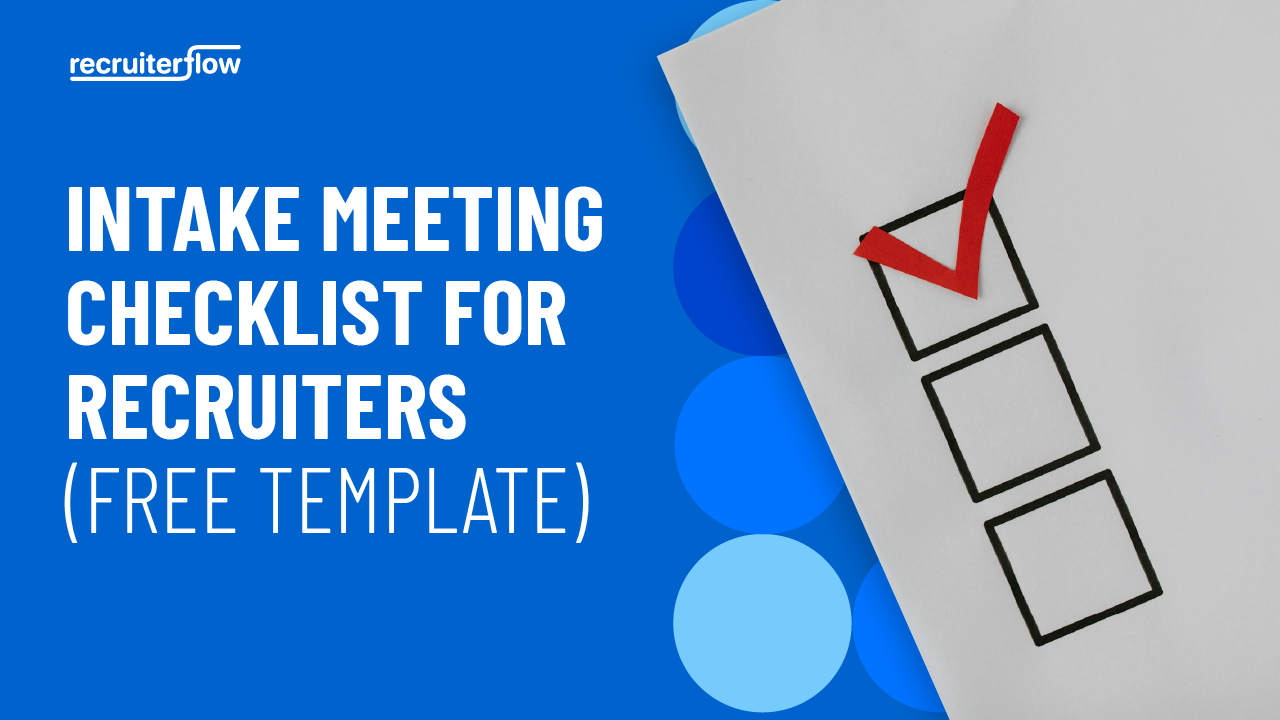
15 Proven Recruitment Marketing Ideas in 2025

The talent shortage in 2025 is very real, with over 45% of employers struggling to find qualified candidates. It’s entirely possible that your recruitment team is putting in effort that won’t bear fruit — cold reaching via LinkedIn, seeking referrals from existing employees, and attending virtual and in-person career fairs.
Along with competitiveness, candidates are also impacted by uncertain economic conditions; they are more reluctant to change employers.
To meet these challenges, recruitment marketing needs to be a crucial element in your strategy, especially for top-tier candidates. The global market for recruitment marketing is projected to go from USD 1.2 billion in 2024 to USD 1.7 billion by 2030, a CAGR of 7.0% from 2024 to 2030.
This article dives into the definition, necessity, and 15 precise strategies for recruitment agencies to adopt and innovate. It will cover a set of recruitment marketing ideas to attract the right people’s attention and convert them from interested to invested.
What is Recruitment Marketing?
| Recruiting | Recruitment Marketing |
| Focuses on the hiring process | Focuses on building and promoting the employer’s brand |
| Is undertaken after the job positions open | Is undertaken longer before job positions open |
| It is driven by recruiting strategies | Is driven by marketing strategies |
| Aspires to fill immediate needs for qualified candidates | Aspires to drive long-term candidate interest |
Recruitment marketing refers to a set of tactics and strategies employed by a recruitment agency or team to approach, engage with, and nurture talent before they apply for a position. Recruitment teams promote the employer brand, build compelling content around the role/company, communicate and publish via multiple channels, and optimize the candidate experience to lead them to conversion and offer letter rollout.
Recruitment marketing helps source quality candidates, improves the agency’s or client’s brand image and furthers its own business goals.
Why Recruitment Marketing Is Crucial for Staffing and Recruiting Agencies in 2025
The recruitment ecosystem today is the most complex and competitive that it has ever been. Candidates, especially the most coveted ones, act more like customers while expecting faster hires than ever before.
“Video chats are not the same as an in-person coffee: I know that you know that. But the streamlined support we gain from digital tech is powerful, and it’s rapidly redefining the way we connect with new talent. The tools we once used to kick off an interview and make a great first impression have become obsolete. The game has changed. Now what?” – Ben Farber, owner of Bristol Associates, a boutique executive search firm.
Recruitment marketing is a necessity for modern recruitment agencies that have to work “between a rock and a hard place”. It helps them attract top talent, keep clients happy, attract new clients, stay market-ready and relevant to the competition.
Prioritizing Candidate-centric Expectations
The best candidates are in high demand. They will often ghost and drop out mid-funnel because they simply aren’t engaged.
In-demand candidates in 2025 expect a personalized journey rather than responding to mass outreach. They want employer transparency before applying, and prefer intuitive digital experiences that are mobile-first, fast, and friendly.
Recruitment marketing converts transactional recruitment processes into more personalized experiences that place the candidate at the centre. As part of employer transparency, recruitment agencies also lean into creating a social media presence for the clients’ brand. This helps build trust even before they approach the candidate.
In short, recruitment marketing aims to build communities, not just fill jobs. It plays the long game.
Also, check our detailed blog on candidate expectations.
Reshaping Outreach With Digital Transformation
Traditional job boards, cold outreach, and emails are saturated. Most often, recruiters end up chasing candidates who will not respond.
Recruitment marketing takes agency strategy beyond “spray-and-pray”. It emphasizes:
- Programmatic job advertising targeting candidates precisely
- Smart automation and outreach tools to keep candidates engaged
- Segmentation and analytics to personalize outreach at scale
Recruitment marketing handles the front end of candidate attraction, while recruiters focus on high-value conversations.
Establishing Employer Brand to Capture Candidate Attention
Candidates research employers before they even decide to take an interview. They want to work for employers they can trust, especially if they are interviewing with multiple companies.
Recruitment marketing focuses on strengthening the employer brand for clients, directly inspiring candidates to engage with and respond to recruiters. It does so by:
- Help clients define and promote their Employer Value Proposition (EVP)
- Promoting company culture via social media and other public-facing content
- Building a long-term reputation that becomes highly valuable during hiring drives
Agencies implementing recruitment marketing become each client’s partner in shaping talent acquisition strategy. This enables them to justify premium fees and keep attracting more business.
Implementing DEI
Most clients prefer diverse candidate shortlists. Curating these lists requires agencies to take some extra steps:
- Reaching diverse audiences with inclusive imagery and tailored messaging
- Partnering with community-based platforms and talent groups that are inadequately represented
- Auditing and tailoring job descriptions and employer branding to eliminate bias
Recruiting pipelines representing more diverse searches will gain deeper trust with clients who prioritise inclusion.
Reducing Manual Effort for Recruiters
Apart from engaging candidates, recruiters often get buried under admin work — sourcing, screening, following up, and updating CRMs. It is hard to do both perfectly, and the important things usually take a hit.
Recruitment marketing automates most of the top-of-funnel activity. It uses:
- Email and SMS campaigns to nurture candidates and keep them engaged.
- Chatbots and landing pages to pre-qualify leads
- Retargeting ads to bring unresponsive candidates back
Once these activities are automated, recruiters can focus on closing hires and making clients happy.
Promoting Predictable, Scalable Growth
Most agencies find it difficult to build predictable client or candidate pipelines, falling into the feast or famine cycle.
Recruitment marketing stabilizes the cycles by using
- Content and SEO to build organic inbound leads over time
- Drip marketing campaigns to nurture passive candidates who generally convert later down the line
- Branding options and visibility to get client referrals and more inbound leads
Recruitment marketing builds momentum and creates a brand that attracts opportunities rather than chasing them.
15 Proven Recruitment Marketing Ideas for Recruitment Agencies in 2025
Optimize the Agency/Client Website with a Branded Careers Page
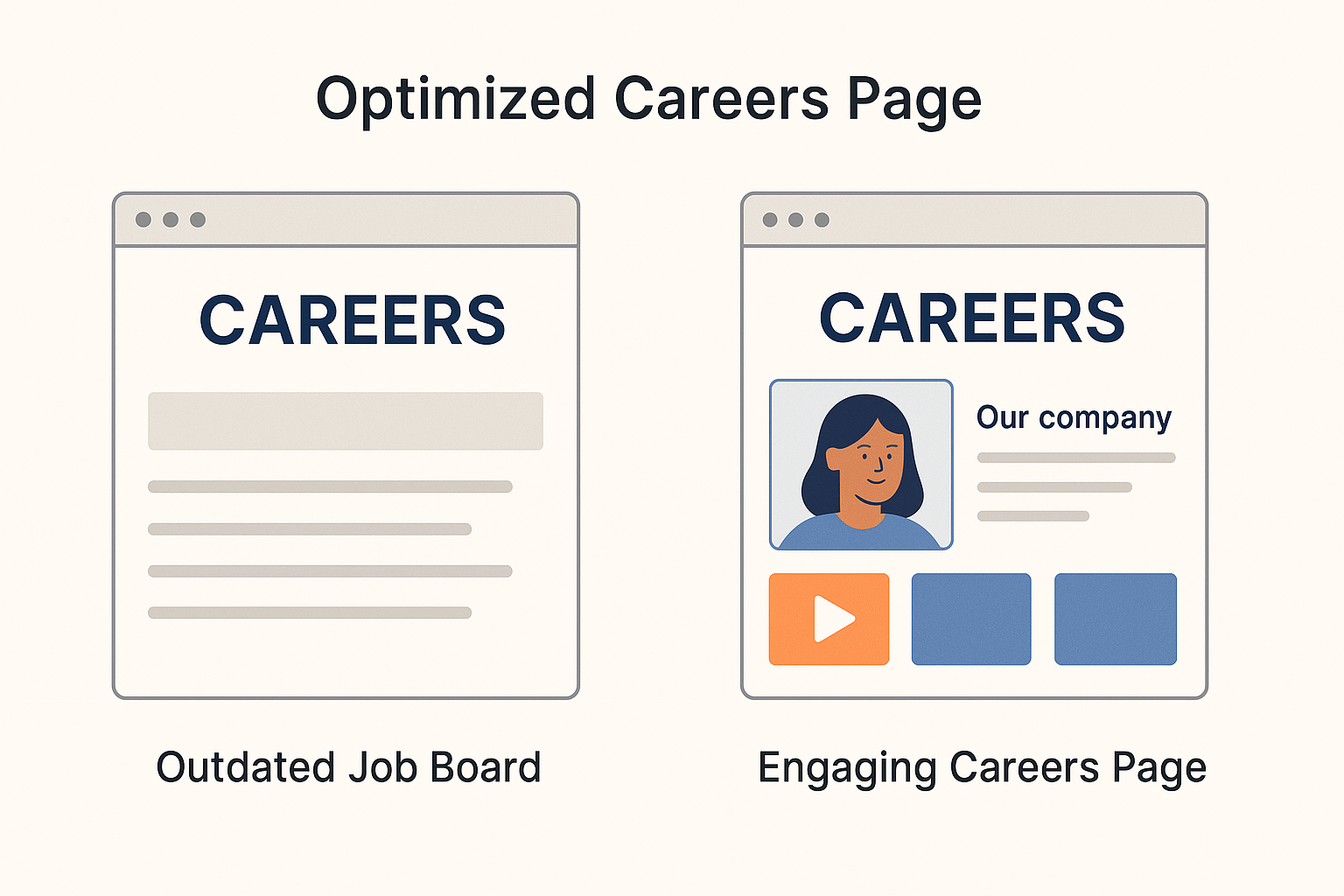
Your website is basically a digital storefront or a digital business card for the client or agency. It drives first impressions, and those are hard to beat.
Use the following steps to maximize your website’s potential in impressing potential clients and candidates:
- Make the website as user-friendly as possible. It should be intuitive, easy to navigate, load fast, and be responsive on mobile devices.
- Optimize the page to rank on search engine results, based on SEO. This isn’t just about incorporating relevant keywords, but also improving technical SEO and website health to grab the Google crawler and algorithm’s attention.
- Create a dedicated Careers page. If one already exists, optimize it to showcase job openings, company culture, and employee experiences.
Real-world impact: Wicresoft partnered with a healthcare organization to optimize their employer brand and Career website. Consequently, a close monitoring of media contracts led to a 5% performance improvement of key buys. These buys represented over $500,000 of investment.
Prioritize Social Media to showcase Brand Identity
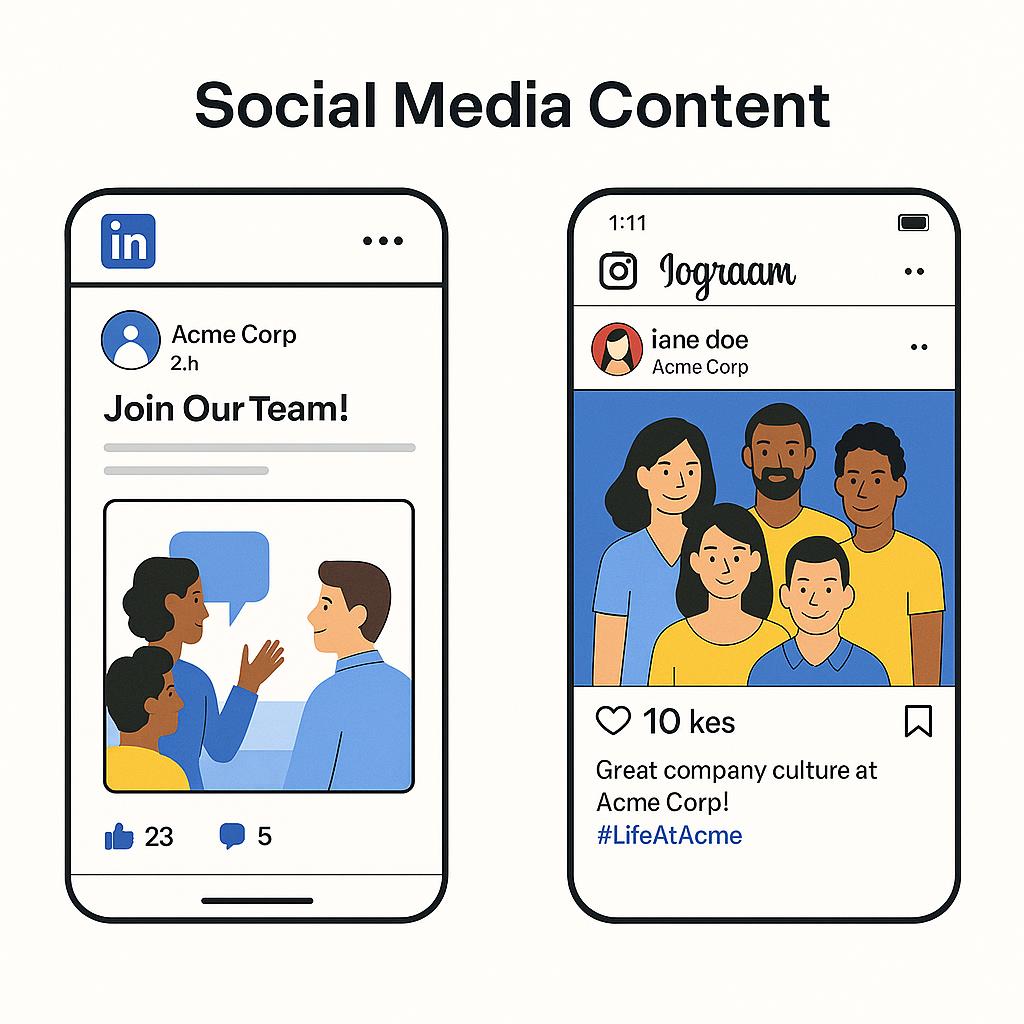
Social media might be saturated, but its potential is not yet fully utilized. Recruiters should focus on engaging potential candidates and clients by:
- Posting industry news and analysis, job openings, behind-the-scenes snippets, and expert opinions on the right platforms, especially LinkedIn and X.
- Interacting with target audiences with Q&A sessions, polls, and live videos. Get the community to start talking to you by opening the door to honest conversations.
- Optimizing platforms for what they do best. For instance, use LinkedIn for professional networking. TikTok/Instagram works best for showcasing company culture or hosting Q&As, or contests.
- Consider unconventional channels like live chat to engage younger candidates.
Use Programmatic Advertising
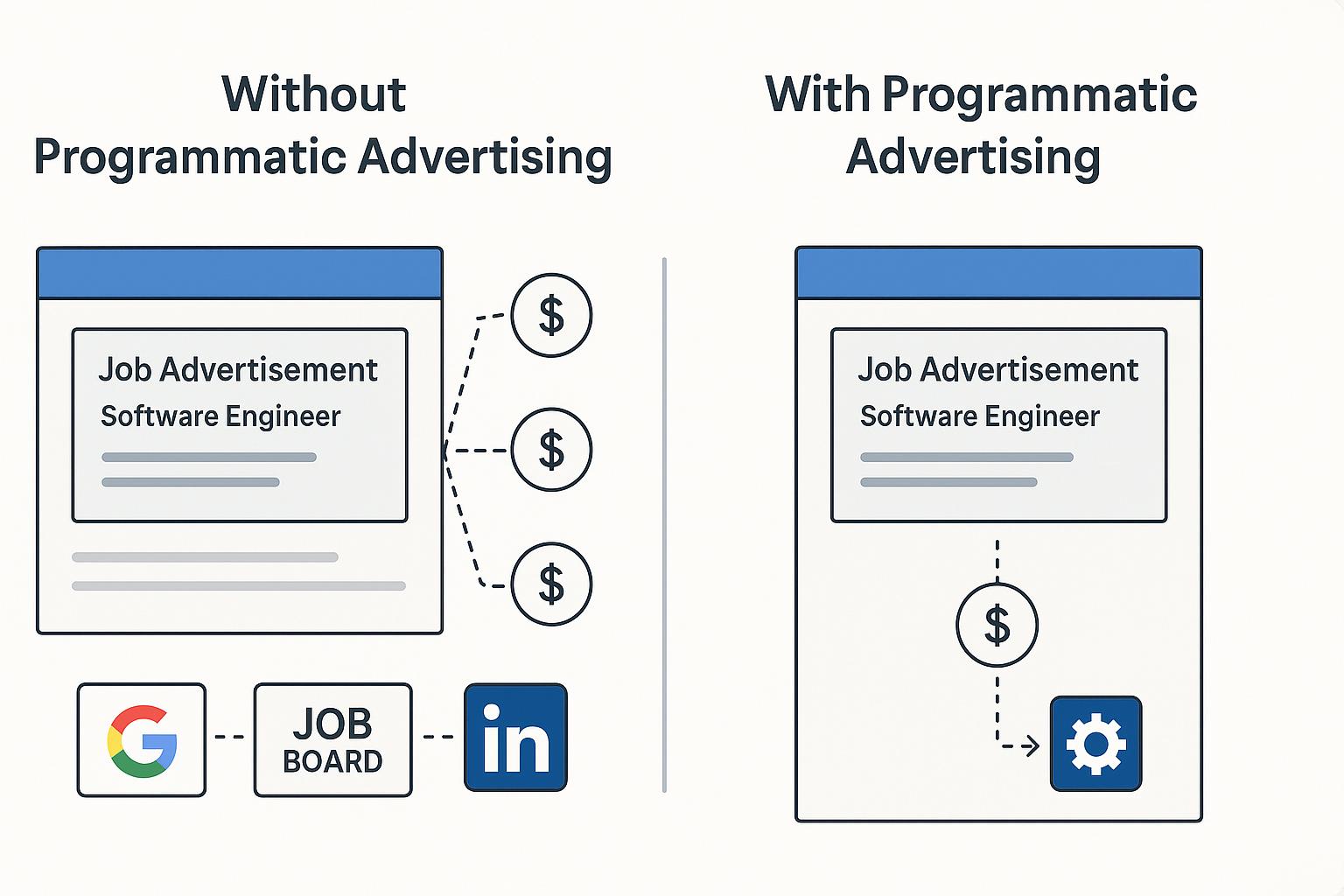
Get technology onboard. Automate job advertising in ways that it reaches the right candidates in the right mindset. Consider the following tactics:
- Use backend data to display precise ads to particular demographics based on age, behavior, and previous work history (knowable via LinkedIn, for example). Create responsive search ads that automatically adjust headlines and descriptions to better connect with your target audience and improve engagement.
- Monitor KPIs like a hawk, and allocate funds to high-performing channels, which may change with every quarter (sometimes LinkedIn works better, sometimes Instagram).
Real-world impact: In 2023, I.K. Hofmann USA derived a 102% ROI by implementing programmatic advertising. It implemented a single-source job advertising solution that would increase applicant rates and integrate its ATS and various job boards. Upon doing so, the applicant rate rose by 966%.
Rethink Your Content Marketing Strategy
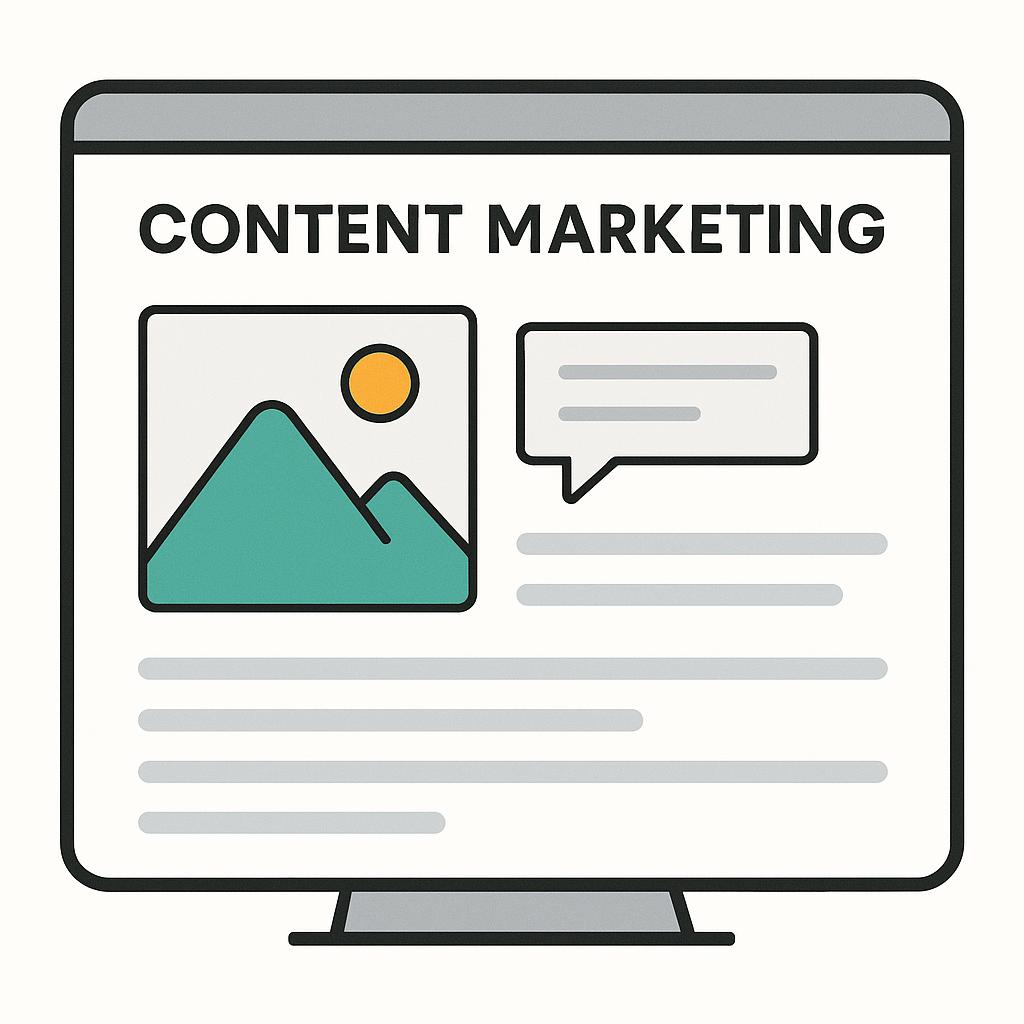
Your content marketing strategy now needs to focus on establishing the agency or client as an industry thought leader.
- Get expert employers to share their opinions on recruitment trends, offer tips for job seekers, and share success stories.
- Build and publish ebooks and white papers with in-depth examinations of talent acquisition strategies, market changes, and shifts in candidate expectations.
- Host webinars and sessions with experts. Establish the brand voice as one worth listening to for potential candidates.
Real-world impact: Genpact re-oriented its modern content marketing campaigns across 14 different channels, including Facebook, Google AdWords, YouTube, and Instagram…and was able to reach more than 700,000 bilingual and trilingual candidates around the world.
Invest more Effort into Video Marketing
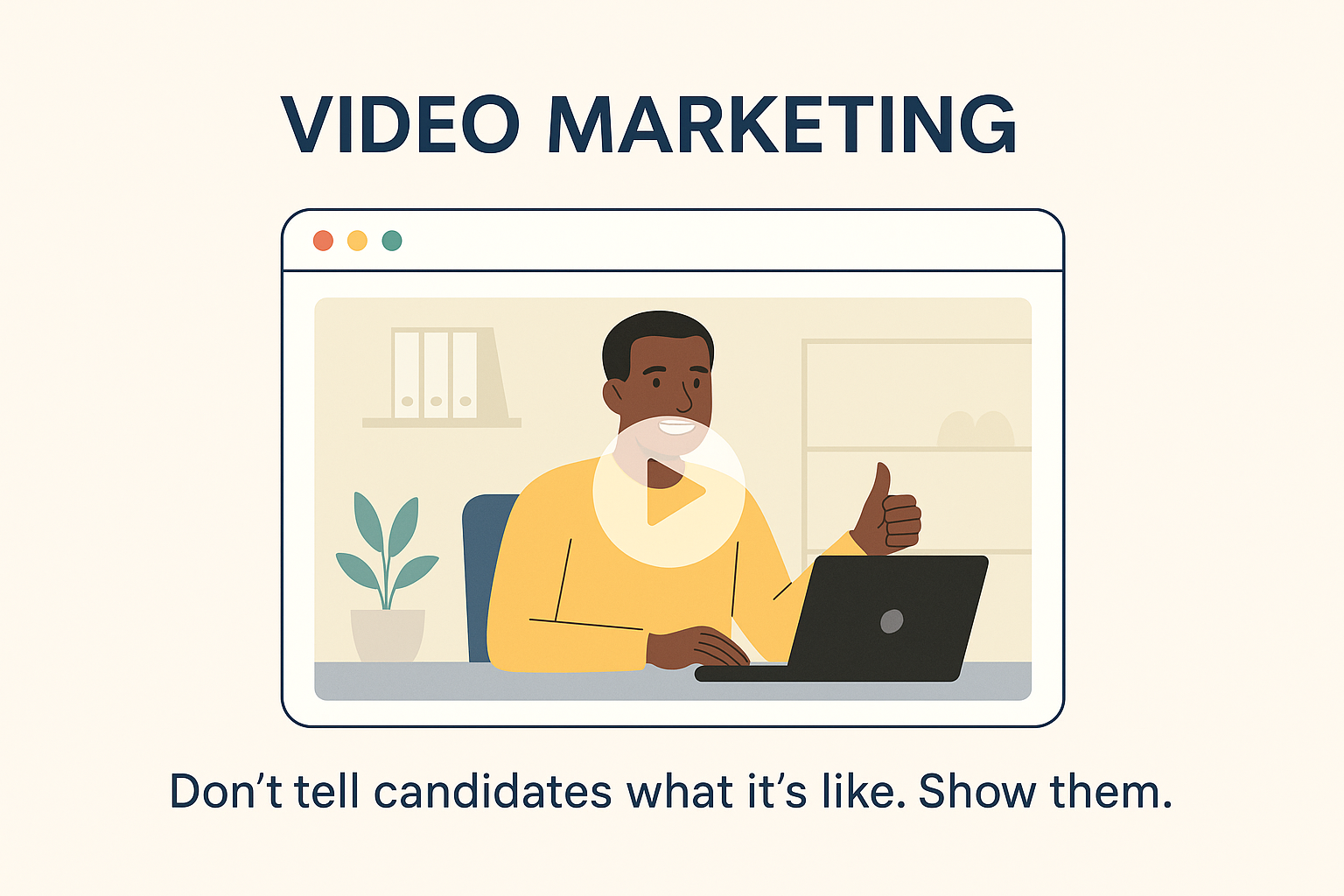
Videos are known for driving greater engagement than most other content formats. Recruitment marketing can use video to tell relevant and human-first brand stories, which will attract top talent who want positive work environments.
Use video content such as:
- testimonials of placed candidates and happy clients.
- snippets of daily life at the office (be it a cubicle or a national park)
- about me videos that introduce team members and their unique selves to the audience
Real-world impact: As far back as 2021, the LAPD had already tapped into the power of video marketing to enhance recruitment efforts.
Ramp up Employer Branding
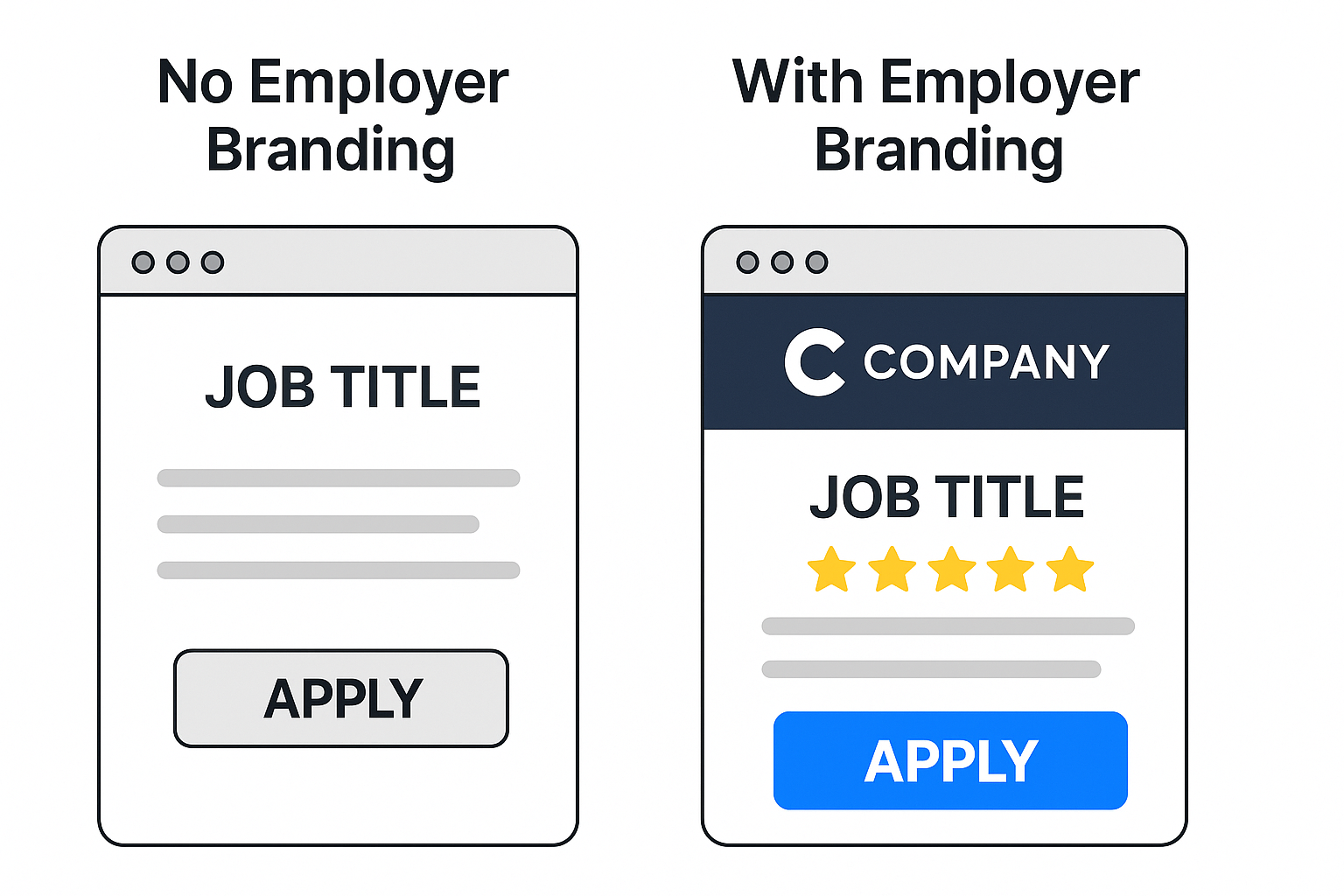
Talk to clients about refining their brand to appeal to candidates directly. Collaborate with them to create a brand persona that potential employees would appreciate.
A few steps to start with:
- conduct brand audits to evaluate and deliver feedback on the client’s current branding activities
- run branding workshops to match company goals and values with positioning tactics
- have someone always verify that all customer-facing communication aligns with customer values and culture
Real world impact: When Cielo was having trouble sourcing local talent in Mexico, they focused on developing a unique brand identity specifically to appeal to a Mexican candidate pool. It worked, resulting in the average time to fill becoming 28 days, focus on diversity increasing by 40% and a 90% rise in hiring manager satisfaction.
Bring in AI and Automation Tools
Don’t shy away from incorporating AI and other automation mechanisms in the recruitment marketing pipelines. Examples of this include:
- Chatbots to instantly answer common candidate inquiries
- ATS and CRM like Recruiterflow to get more candidates easily and quickly
- AI engines (like those offered by Recruiterflow) to scan resumes and quickly narrow down on suitable candidates
Double down on DEI
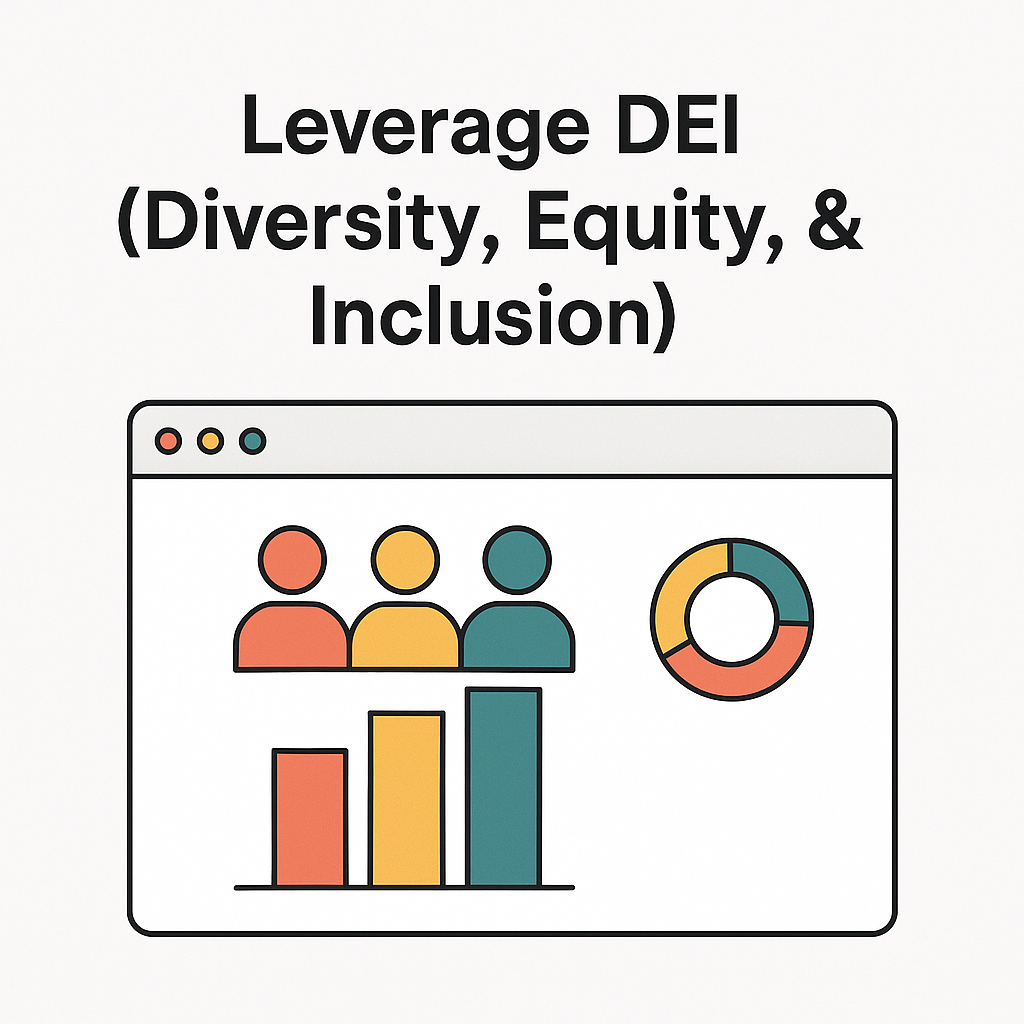
When employers pay attention to diversity and inclusion, they attract the attention of talented candidates who might otherwise not apply due to previous experiences with discrimination. At the very least,
- Use bias-free language in job descriptions that must appeal to a diverse audience.
- Collaborate with organizations and platforms to reach underrepresented groups.
- Refine branding efforts to reflect the employer’s stance on diversity.
Host Virtual Events and Webinars
To engage with a wider audience, consider organizing some virtual events and webinars such as:
- Career fairs to connect employers with potential employees
- Workshops to help candidates build resumes, prepare for interviews, and gain industry knowledge
- Networking events to bring industry professionals together to exchange ideas and build connections
Consider Drip Email Campaigns
Start viewing email as a real avenue for connection. It’s been derided a fair bit, but it is one of the most successful engagement channels in the market. Look at these email marketing numbers from Constant Contact:
When creating emails, focus on:
- Sending personalized content with tailored messages based on the recipient’s interests, online history, and behaviors
- Sending regular updates to recipients about new openings and industry information
- Including a relevant CTA, encouraging email viewers to engage with your brand
Facilitate more Employee Advocacy
Potential candidates want to hear from employees. They won’t trust employer narratives because of the associated vested interest. However, when existing employees share their experiences with a company, they are more likely to be believed.
Find ways to get employees to share their day-to-day work life via:
- Social media: encourage employees to post positive work experiences on public platforms.
- Referral programs: incentivize employees with rewards if they refer people to open roles.
- Testimonials: highlight employee stories in outbound marketing materials — blogs, newsletters, social media posts, etc.
Prioritize Mobile-First Design
“45% of job seekers use mobile devices exclusively for job searches. A mobile-friendly application process enhances accessibility and engagement.” source
In the age of mobile devices, your digital content needs to be mobile-friendly. At the bare minimum:
- All websites and emails should use responsive design to display correctly on all devices
- All content and apps should be optimized for different mobile devices and screens (via appropriate pre-release testing)
- SMS campaigns should be triggered with updates and reminders
Rely on more Skills-based Assessments
Kornferry’s survey revealed that “24% of respondents identify finding the right skills as a top two challenge for 2025.” source
Make past work experience less important as a filter. Focus on testing and verifying real-world skills in live exercises. Examples of assessments to evaluate skills include:
- Online tests, such as coding exercises, to gauge existing technical skills and spontaneous analytical skills.
- Simulations of real-world scenarios to check candidate responses and problem-solving mindset.
- Evaluations of past results (in other companies) to check if patterns emerge.
Regularly respond to Online Reviews
It is imperative to maintain a positive brand image online. To this end, do the following:
- Regularly scan for feedback on sites like Glassdoor and Indeed
- Respond with courtesy and information to all reviews, good or bad. If you want to disagree with a negative review, have the data points to back up your claims
- Use collected feedback to continuously improve the agency or client’s reputation through real-world action
Monitor and study Marketing Metrics for Improvement
You’ll need to keep measuring and studying the performance of deployed marketing strategies.
- Focus on the right metrics — application rates, effectiveness of each source, time-to-fill
- Run A/B tests to identify which content resonates best with the target audience
- Keep teams apprised of what’s working and what needs to change
Creating a recruitment marketing strategy is only the first step. Every agency needs dedicated recruitment marketing tools for implementation. To help you get started, here’s a comprehensive list of the best recruitment marketing tools you should consider.
How to Measure the Success of Your Recruitment Marketing Campaigns
Are the best-looking content, cleverest campaigns, and most engaging journeys working to attract top talent? You won’t know unless you track and analyze the metrics that matter.
Time to Apply
This refers to the time passing between a candidate first seeing the job posting or content piece, and them completing the application. A shorter time to apply signals a stronger engagement. It means that the messaging, user experience, and CTA are working well.
Benchmark: This would vary with location, platform, and industry. However, less than 24 hours from first touch to application is ideal.
Application Conversion Rate
This refers to the percentage of people who visit the job posting or landing page and actually complete the application. It indicates campaign effectiveness beyond high traffic. The question is: are people actually doing what the content intends them to do?
Benchmark: Most industry averages hover around 8-12%. If the number hits 20%, it is an exceptional campaign. Someone deserves a bonus.
Cost per Applicant (CPA)
This refers to the total expenditure on a campaign divided by the number of finished applications.
The number reveals how affordable it is to hire qualified candidates, and is needed to verify that the ad budget is being used optimally.
- High CPA + low quality leads = a campaign burning budget
- Low CPA + high-quality leads = a campaign worth the budget
Qualified Candidate Rate
This is the % of candidates that meet the employer’s criteria and advance in the hiring pipeline. Since volume without quality is basically wasted recruiter hours, this metric tests the system for message clarity and efficacy.
Benchmark: At least 50% or more applicants should make it past the first screen. More qualified candidates imply that the campaign is attracting the right audience.
Source of Hire
This refers to the particular source, channel, or campaign that drove a lead which led to a successful placement. By knowing which sources work best, recruiters can optimize their focus for maximum results.
Look for sources by not just traffic, but by job boards, SEO, email, social media, etc. Put in UTM tags, CRM integrations, and candidate self-reporting forms to improve data quality.
Client NPS or Satisfaction Score
This refers to a measure of how happy clients are with the quality of candidates and the speed at which they are recruited via marketing. High NPS corresponds with better client retention, referrals, and chances to upsell services.
Use client feedback and candidate messaging to calibrate actions for attaining higher NPS scores. Track it consistently, and specifically after large marketing campaigns or updates.
You can also check our guide on how to create a recruitment marketing plan for your staffing agency.
Empower recruitment marketing for modern hiring teams with Recruiterflow
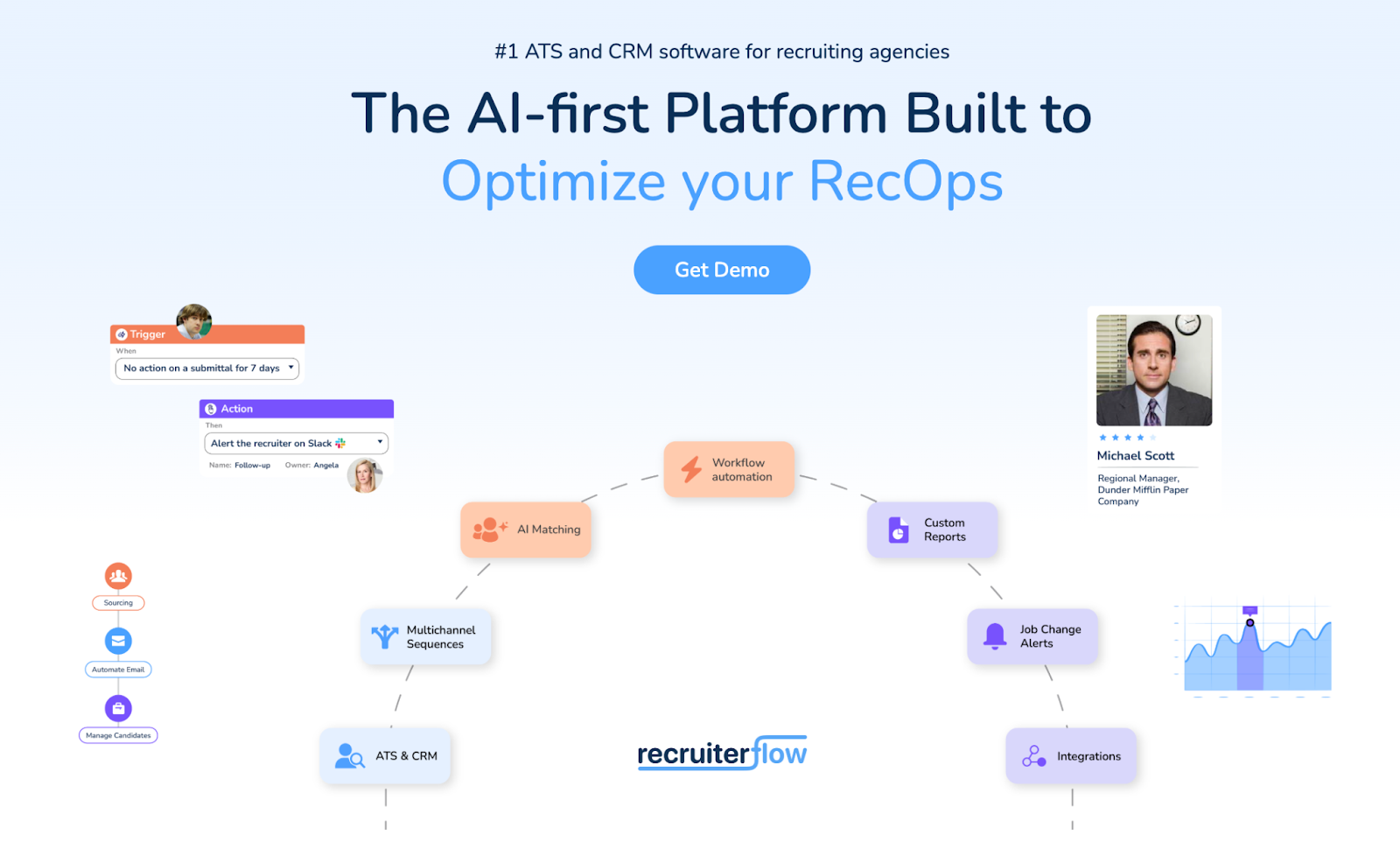
Under increasing pressure to attract, engage, and hire top talent, staffers must turn to streamlined, data-driven strategies and tools that drive them — Enter Recruiterflow.
Recruiterflow is a unified platform that brings sourcing, engagement, and conversion to a single dashboard. The tool offers a range of capabilities to directly implement and execute recruitment marketing tactics and strategies:
- AI-powered candidate matching that targets the right candidate from the very beginning
- Built-in CRM and ATS functionalities that help nurture candidates via segmented, personalized journeys
- Simplified job posting and distribution across job boards (even niche ones) and social media
- Custom branding capabilities that help quickly spin up career pages, email templates, and brand-faithful messaging for use across campaigns and outward-facing platforms
- Automation features to set up follow-up workflows, run multi-channel drip campaigns, and initiate personalized candidate communication
- Real-time analytics and reporting that deliver actionable insights into which strategies are working, by source of hire, time-to-fill, or conversion rates. Scale what works and refine what doesn’t.
Recruitment marketing is no longer optional for beating the competition and accessing the best talent. Recruiterflow gives you the ability to lead the charge and take control of the entire pipeline—from brand visibility to candidate conversion. Get demo, and start turning passive interest into active applications faster and at scale.
Recruitment




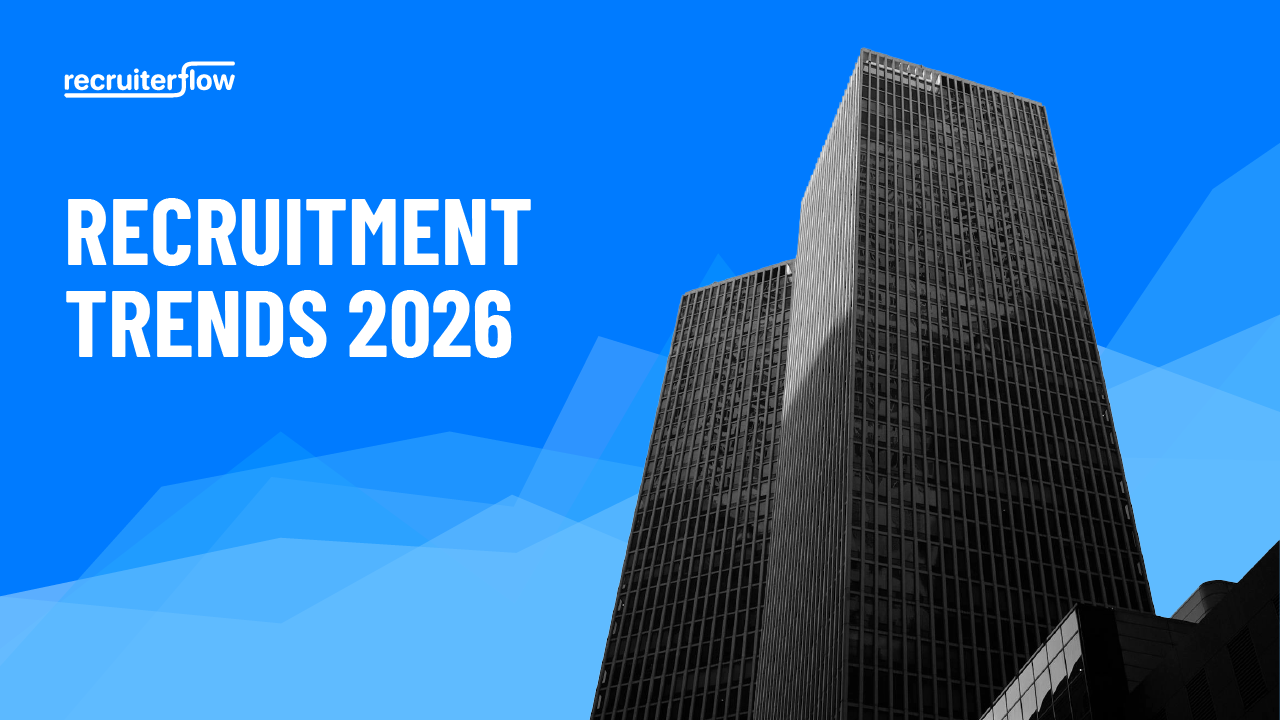

Pragadeesh Natarajan